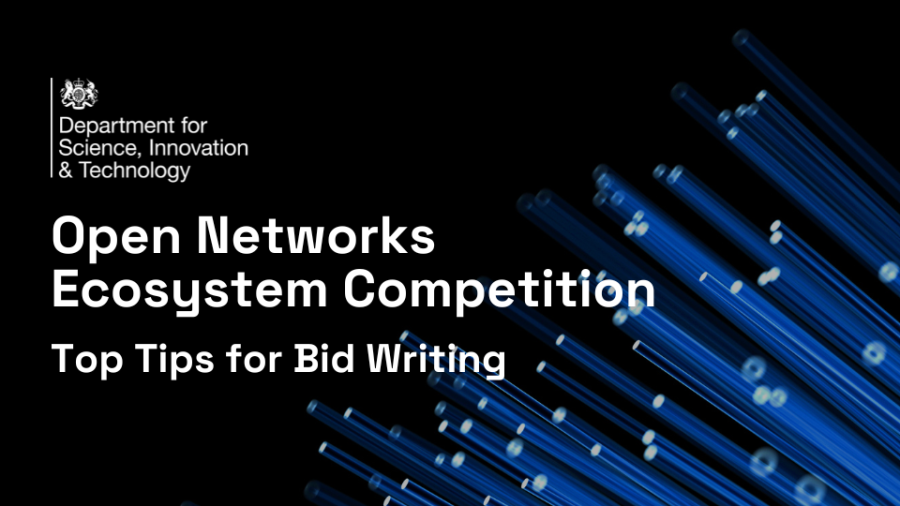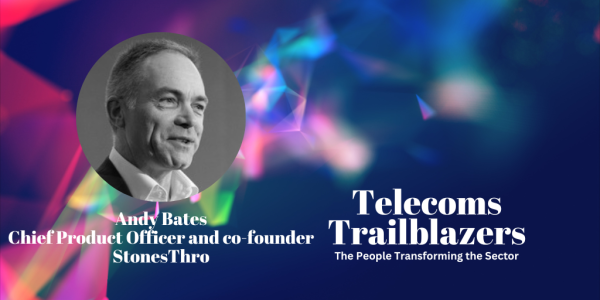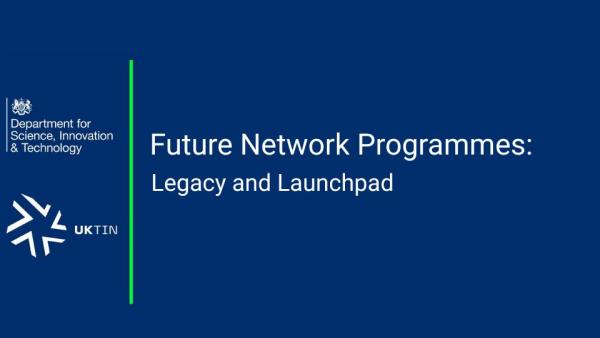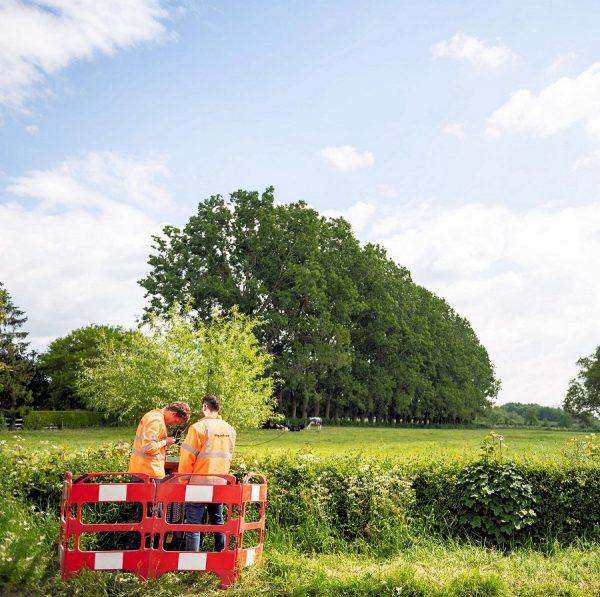The Department for Science, Innovation and Technology is inviting applications for up to £80 million of funding to support the development of open network solutions through the Open Networks Ecosystem competition.

As this is a competition, the Future Network Programmes (FNP) team requires information from applicants to help make the right decisions around which projects to fund. It's also a requirement from the Treasury to ensure public money is spent appropriately. However, they appreciate that submitting a bid can be a lot of work for busy companies. This article aims to provide more information to consortia wishing to bid in the competition and give some top tips and guidance on how to apply.
The FNP team takes the assessment process very seriously. They need to ensure that public money will be spent properly and that every bid is assessed fairly and impartially. This means a range of subject matter experts will assess each part of the bid. The assessment panel will be comprised of a mixture of civil servants and independent advisers to the department. Confirmation/implicit bias is not permitted, meaning a bad score in one section will not get uplifted because of good scores elsewhere. The only things that are assessed are what’s in the bid, any experience of working with applicants beforehand does not affect those scores. For that reason all assessors must sign a conflict of interest form, where there is a conflict, they do not assess. In terms of scoring, answers are scored 0 to 7 and assessors are encouraged to use the full range of scores. Assessors are independent and they do not discuss bids among themselves until moderation.
What to do and what to avoid
- Read the guidance carefully - DSIT do their best to spell out exactly what they expect to see in a bid.
- They appreciate there’s a lot of material to digest but it’s all there to help craft a good bid
- Use straightforward language - communicate plans clearly. Assessors can tell when a response is all jargon and no substance - it won’t give you a higher score if it makes it harder for them to understand what you’re planning on doing.
- Don’t go over the word limit - Assessors sometimes have to look at dozens of bids so that’s why there’s a word count. They won’t read beyond the word limit as that could give you an unfair advantage over those who stick to it
- Don’t pretend everything is finalised before you submit - assessors would much prefer an honest assessment of what you will have and by when rather than evasive or misleading language.
The key areas of the bid the assessors are scoring are:
- Project description, objectives and outcomes
- Outcome sustainability, benefits and route to market
- Project delivery
- Financial
There is also a section which asks about additional funding activities, however, this is optional and will not be scored as part of the assessment.
Section A: project description, objectives and outcomes
A good response will:
- Provide a clear and compelling description conveying an understanding of the nature, scale and value of the proposed project, and why the proposed consortium is well-placed to deliver it
- Include a clear outline of which Open RAN challenge or challenges the project plans to address, the technical and innovative components of the project and its approach to cyber security
- Use SMART objectives (or a similar approach) to explain the outcomes of the project
Things to avoid:
- Not responding to the brief
- Including grandiose claims not backed up by evidence
- Vague and woolly language
Section B: outcome, sustainability, benefits and route to market
A good response will:
- Provide a clear explanation of the project’s outcomes and outputs, and how it intends to contribute to developing the UK’s Open RAN capabilities and sustainability beyond the DSIT funding period.
- Answers to this section should build on what’s provided in the “Project description, objectives and outcomes” section.
- Aligning the project-specific benefits with those set out in the competition guidance.
- Explaining what will be accomplished and what impact that will have (i.e on TRLs, finances, social and economic outcomes etc)
- Evidence that the applicant has a clear benefits realisation methodology (i.e. that they have the tools in place to capture those outcomes and understand how to use them.)
- Evidence that the applicant has thought about the life of the project beyond DSIT funding (i.e. commercialisation or funding from elsewhere for further R&D.)
Things to avoid:
- Failing to show how project objectives translate into measurable outcomes
- Not demonstrating an understanding of what those outcomes mean for the project and the project will capture and implement learnings.
The pitching event presentation template can be downloaded here.
Section C: project delivery
A good response will:
- Provide evidence that the project proposal is credible and that there is a robust approach to progressing and controlling the project, which is suitable and proportionate for the scope and the funding levels sought.
- Provide a clear, costed delivery plan, setting out:
1/ What the project aims to achieve
2/ When that will happen i.e milestones and work packages
3/ What it will cost
4/ Who will be responsible for each stage - Evidence that sufficient thought has been given to possible risks and mitigation strategies (i.e. a clear risk register provided)
Things to avoid:
- High-level, vague plans without underpinning detail
- Milestones without clear dates or estimated spend
- Unrealistic or over-ambitious plans where there’s evidence of optimism bias or a lack of experience
- Unclear governance plans, e.g. where decision-making and dispute resolution plans haven’t been set out.
Section D: Finance
A good response will:
- Provide a clear overview and explanation of the costs of the programme and confidence in financial management and control of the project.
- Provide detail to demonstrate the project will be deliverable and that the grant will be spent in accordance with all relevant conditions - clearly linked to the activities described in previous sections.
- Include information on the major cost components in the project and how they show value for money.
- Outline what each consortium member will be delivering and what the costs will be explaining any value-in-kind, and how costs have been calculated (if an applicant has this worked out from the beginning, it will help the grant funding agreement process if they’re successful).
- Provide an explanation of the sourcing approach and what procurement methods you have used to ensure value for money.
- Explain the need for the grant and how the funding will help progress the project where otherwise it would have been unable to do so; what difference government funding will make.
Things to avoid:
- Vague responses which lack the required detail described in the competition guidance, for example not specifying costs or showing underpinning calculations
- Not providing evidence to support that thought has been given to VFM or procurement approaches
The final section, section E focuses on additional activities that proposed projects could explore. This section is optional and unscored, however, it has been included in the application process to help projects begging to think about any enhancements to their projects that they would consider should additional funding and/or time be made available.
A final word
The main advice that we would offer is ensuring that all applicants read the competition guidance carefully and ensure you answer each of the questions fully against the requirements that DSIT has outlined. The competition closes 11:59 pm on 23 May 2023. If you have any questions or would like more clarification, please contact us at [email protected].
Your question and the respective answer will be aggregated, anonymised and added to a public Q&A document unless commercially sensitive. The deadline for submitting clarification questions is 9th May 2023.
Download The Pitching Event Presentation Template
We want to hear your views
The ONE competition represents the final push for the Open Networks R&D fund and DSIT would like to hear from you on how we can help you mobilise your projects quickly in the summer.
When it comes to the information requested from projects at GFA stage, which bits do you find most difficult and time-consuming? What could we do better? If you would like to share your feedback on the most challenging part of the Grant Funding process, please email [email protected] by the (18 April 2023) and we will do our best to address this feedback in time for the mobilisation of the successful ONE projects.
We have already begun work to streamline our requirements with financial forecasting and have made more resource available to help you define project milestones.
Participate in the ONE Competition Online Pitching Event
DSIT is offering stakeholders an opportunity to pitch and find consortium partners at a networking event for the Open Network Ecosystem (ONE) competition.
This is taking place Tuesday 18 April from 2-3.30pm. If you’d like to register your interest to attend or pitch at the event please see the registration page here.
The pitching event presentation template can be downloaded here.









